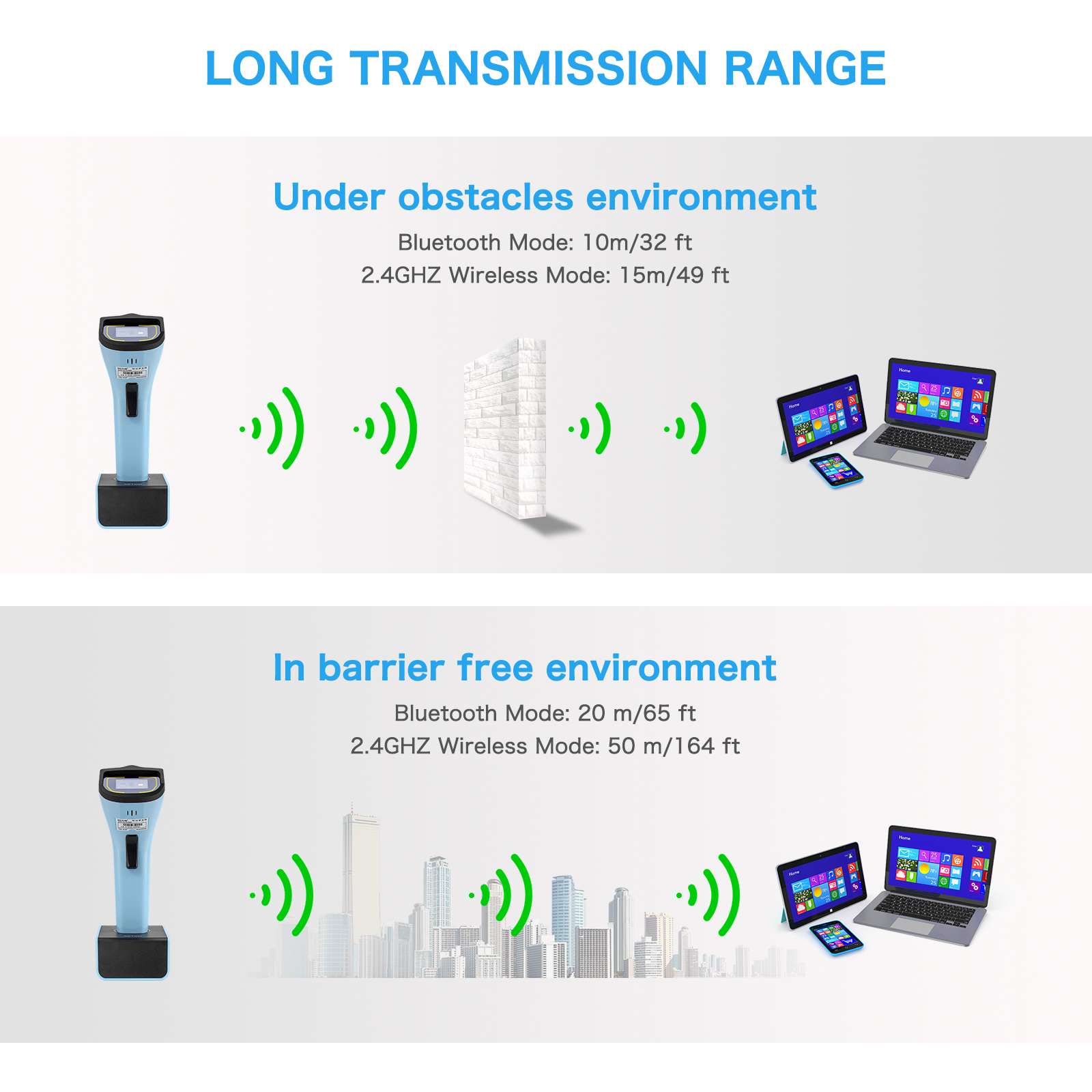In the wave of digital office work and automated management, wireless handheld barcode scanners have become indispensable tools in numerous industries, including retail, logistics, and warehousing. Mainstream wireless handheld barcode scanners on the market are categorized by communication technology: 2.4G, Bluetooth, and Wi-Fi. Each version has its own advantages and disadvantages, making choosing the product that best suits your business needs a key consideration for buyers.
2.4G Version: A Reliable, Stable Short-Range Option
2.4G wireless technology is widely used in wireless handheld scanners. 2.4G wireless technology offers excellent anti-interference capabilities and relatively stable signal transmission. Netum's 2.4G wireless handheld barcode scanner, for example, ensures stable data transmission even in complex indoor environments, such as warehouses packed with goods, effectively reducing packet loss. The transmission range of wireless handheld barcode scanners generally reaches tens of meters in open areas, with some high-performance models even reaching around 100 meters, sufficient to cover most small to medium-sized work areas.
In terms of cost, 2.4G technology is relatively mature, and the overall cost of the scanner is relatively low, making it a cost-effective option for businesses with limited budgets. However, 2.4G versions also have certain limitations. 2.4G wireles barcode scanners typically require a dedicated USB receiver, and when multiple devices are in use simultaneously, signal congestion may occur due to frequency contention.
Bluetooth: A flexible and low-power portable companion
Bluetooth technology is known for its low power consumption, which makes Bluetooth wireless handheld barcode scanners have excellent battery life. Scanners using Bluetooth 5.0 technology, for example, can last a full day of typical work on a single charge, significantly reducing the impact of frequent charging on work efficiency. Bluetooth wireless handheld barcode scanners offer significant advantages in short-range communication, typically with a transmission range of around 10 meters. These scanners are suitable for use in scenarios with a relatively concentrated operating area, such as retail checkout counters, where cashiers can conveniently scan items within a relatively small area.
Bluetooth wireless handheld barcode scanners are also highly compatible, easily pairing with a wide range of Bluetooth-enabled devices, such as computers, tablets, and mobile phones. This makes them highly adaptable in situations where collaboration with multiple mobile devices is required. However, when the effective range is exceeded or signal obstruction occurs, Bluetooth connections can be easily interrupted, impacting data transmission continuity.
Wi-Fi Version: A Long-Range, High-Speed, and Efficient Tool
Wi-Fi wireless barcode scanners offer significant advantages in transmission speed and range. They can quickly upload large amounts of scanned data to a server or cloud in real time, making them crucial for logistics warehouses that handle massive amounts of product information. In large warehouses, workers using Wi-Fi scanners in various locations can quickly synchronize product information with management systems, enabling efficient inventory management. The Wi-Fi version offers a wider coverage range. Under ideal conditions, the transmission distance of a Wi-Fi wireless handheld barcode scanner can reach tens or even hundreds of meters. However, its relatively high power consumption places high demands on the device's battery life. Furthermore, when the network signal is unstable or Wi-Fi hotspots are congested, the data transmission speed and stability of the Wi-Fi version of the wireless handheld barcode scanner can be significantly reduced.

Key Selection Factors
Application Scenario Requirements: If the work area is small and equipment is concentrated, such as in a small convenience store checkout area, a Bluetooth version of the wireless barcode scanner will meet the needs. For operations in large areas such as large warehouses and factory floors, the longer transmission range of a 2.4G version of the wireless handheld barcode scanner or the long-distance, high-speed transmission of the Wi-Fi version is more suitable.
Device Compatibility: If your company already has a large number of Bluetooth devices and needs a wireless barcode scanner to work with them, the Bluetooth version is undoubtedly the best choice. If the primary purpose is to exchange data with the internal company network and servers, the Wi-Fi version will better integrate into the existing network architecture.
Budget Considerations: When budgets are limited, the low cost of a 2.4GHz wireless barcode scanner can help businesses implement barcode scanning with minimal investment. For businesses with ample budgets and high performance requirements, consider high-end Bluetooth or Wi-Fi wireless barcode scanners.
The 2.4GHz, Bluetooth, and Wi-Fi versions of wireless barcode scanners each have their own advantages. When choosing a wireless barcode scanner, businesses should carefully consider factors such as scenario requirements, device compatibility, and budget. Only then can they choose the wireless barcode scanner that best suits their business and helps them operate efficiently. If you're struggling to decide which version of a wireless handheld barcode scanner to use, contact a Netum sales representative for assistance.
Netum specializes in barcode solutions and has 15 years of experience in intelligent identification applications. As a high-tech enterprise integrating R&D, production, sales, and service, our main products include: barcode readers, 2D barcode scanners, scanning platforms, wearable "Lord of the Rings" scanners, mobile handheld scanners, DPM metal recognition scanners, and long-range high-precision scanners.

